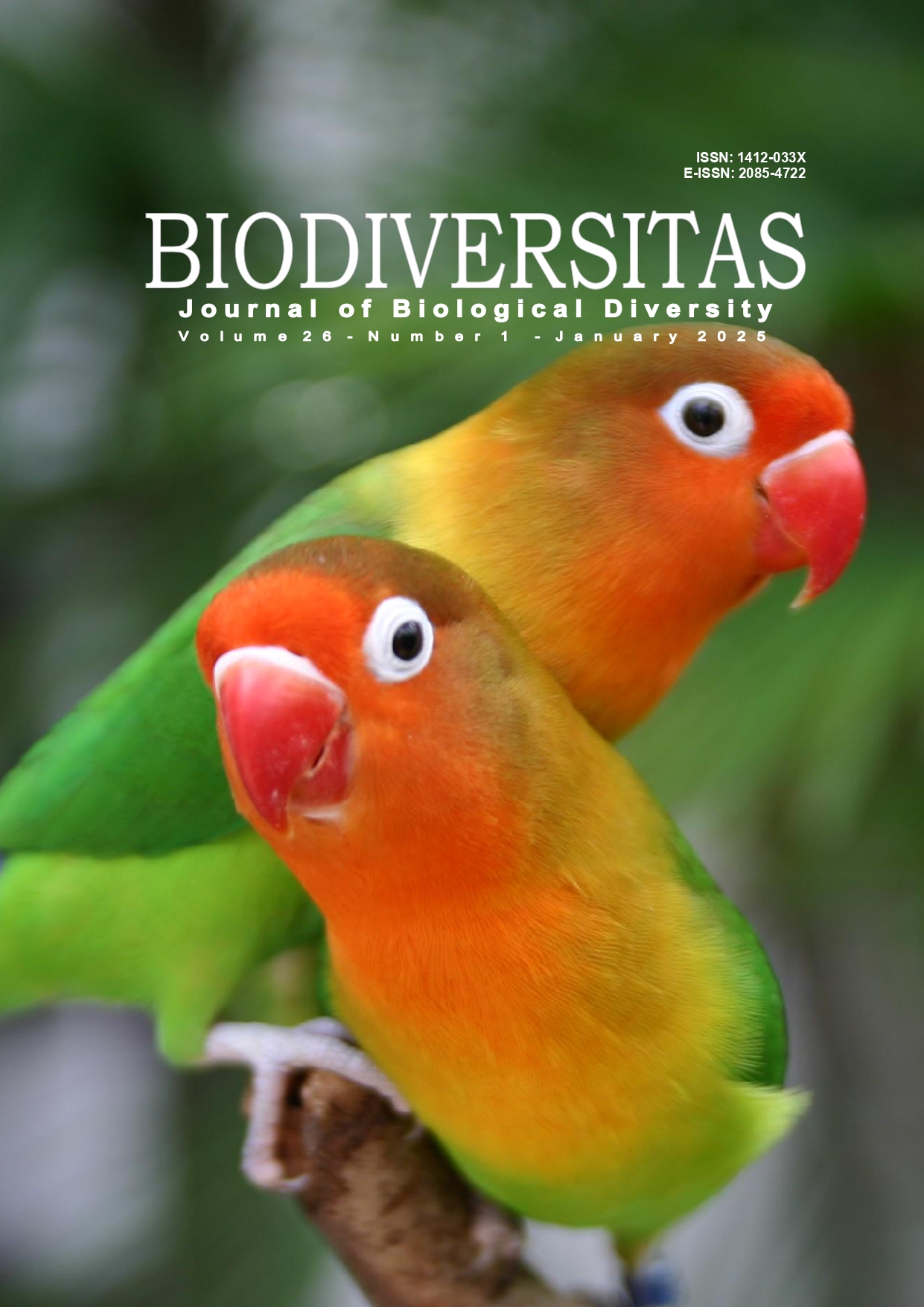Water quality and plankton diversity to support aquaculture in the middle Mahakam Watershed, East Kalimantan, Indonesia
##plugins.themes.bootstrap3.article.main##
Abstract
Abstract. Pagoray H, Suyatna I, Sukarti K, Kesuma AD, Butarbutar T, Raafi M, Suyatna MBB, Daru TP. 2025. Water quality and plankton diversity to support aquaculture in the middle Mahakam Watershed, East Kalimantan, Indonesia. Biodiversitas 26: 233-245. The middle Mahakam watershed is associated with floodplain areas such as Semayang Lake, Melintang Lake, and Siran Lake, comprises some of the longest and widest rivers in East Kalimantan, and plays an important role in fisheries-based economic development. This study aimed to determine water quality in the middle Mahakam and asses its influence on the abundance, diversity, evenness and dominance of plankton in the context of aquaculture. Samples were collected at six sampling points: Pela River (Sangkuliman Village), Pela Lama, middle of Semayang Lake, Mahakam River, Enggelam Estuary, and Melintang Lake. At all sampling points, most parameters met the quality standards of East Kalimantan Provincial Government (2011), except pH, watercolor, COD, and phenol. Phytoplankton and zooplankton abundance was highest in the Mahakam River, with the most phytoplankton belonging to class Bacillariophyceae (49%), and most zooplankton to the Rotifera (63%). The diversity, evenness, and dominance of phytoplankton and zooplankton were relatively low at all sampling points. Various chemical and physical factors influence plankton, so their presence is dependent on and can affect the water quality. There is a need to pay attention to plankton-related aspects that can be used to estimate productivity and aquaculture potential.

